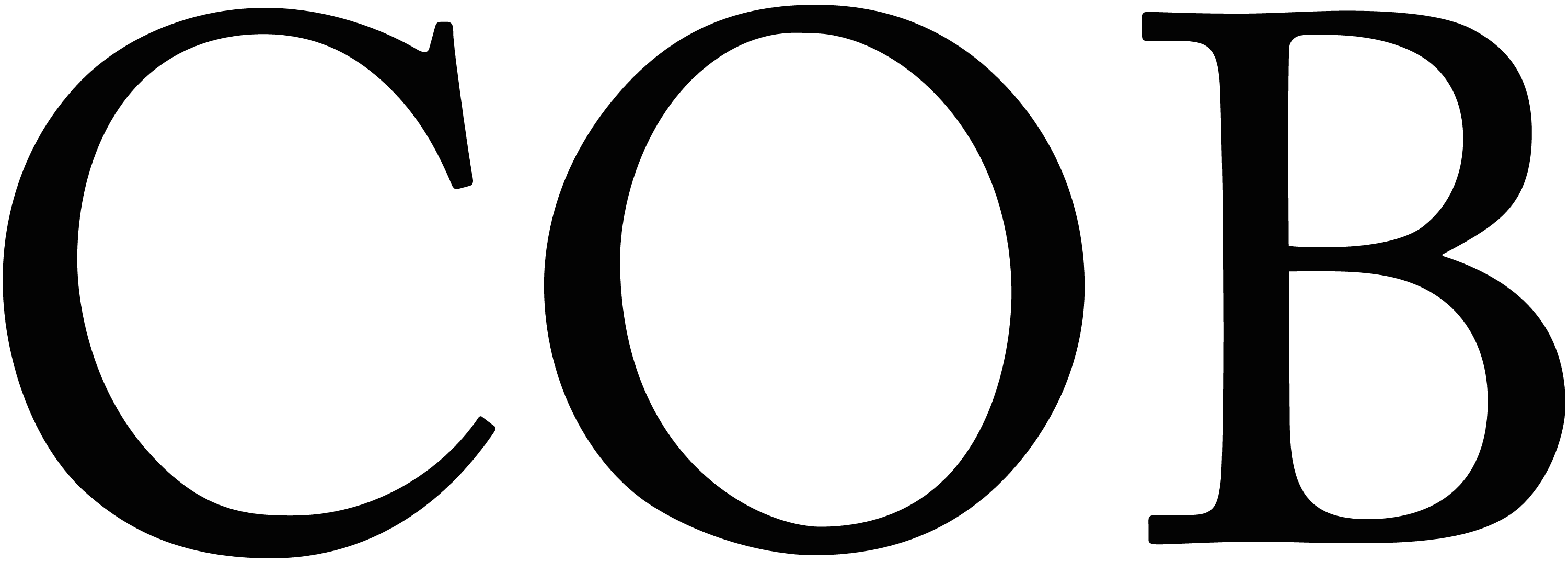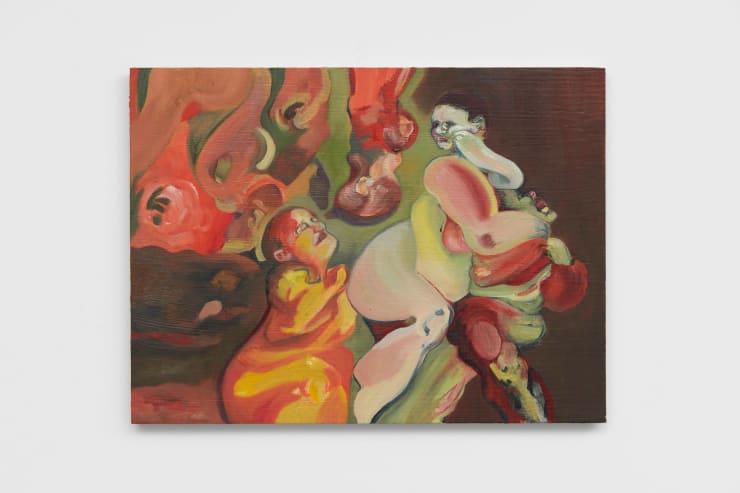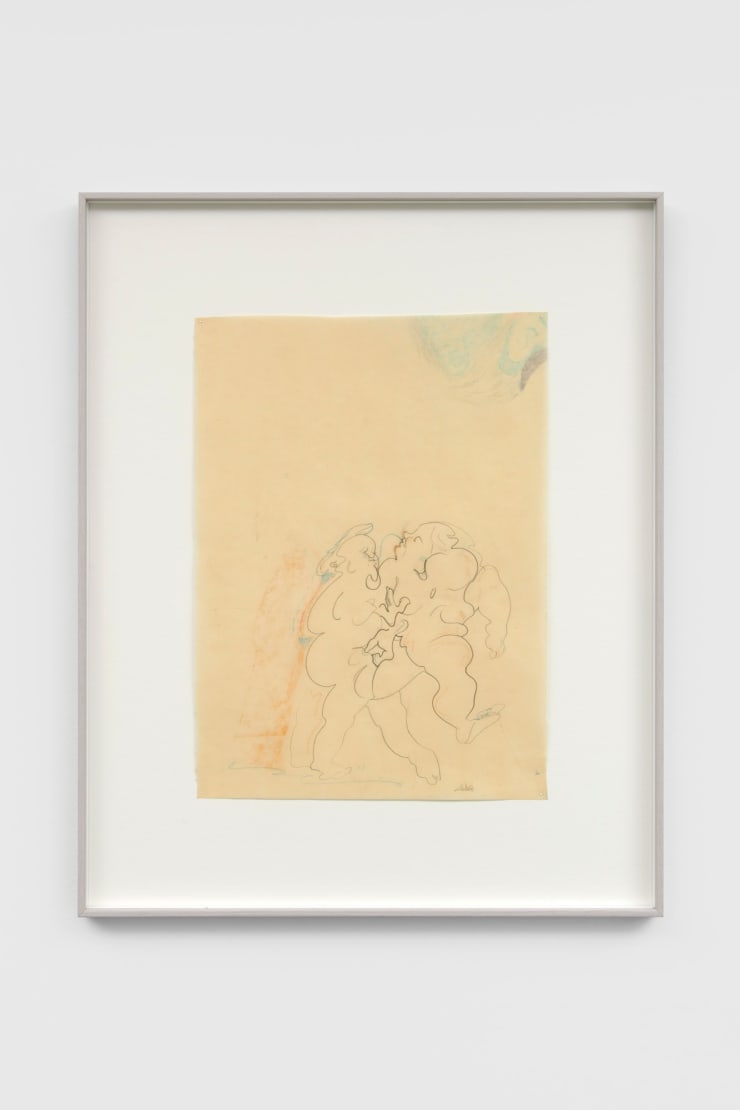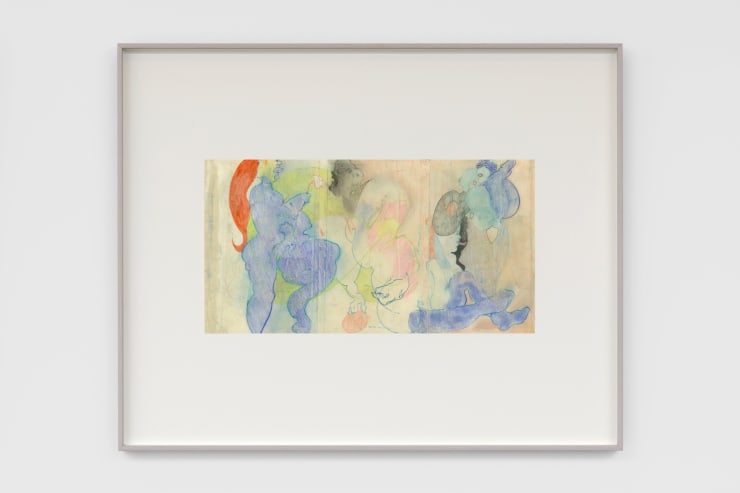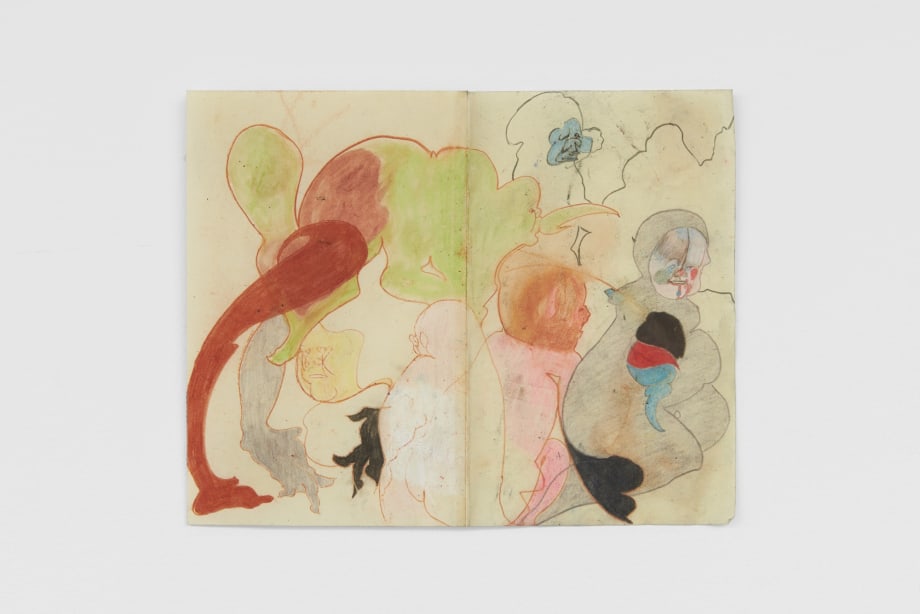Cat Roissetter British, b. 1984
Moving away from the ‘weathering’ techniques of her earliest work, her more recent works on paper can be more recently typified by Roissetter’s distinctive practice of sluicing her paper with cooking oil: a process that emboldens lines and develops the abstracting effects of the carbon paper. Affording accidental marks the same level of sensitivity as the deliberate, Roissetter deploys intricate lines and splashes of vibrant colour to offset her representations of fleshy, cherubic characters, developing her interest in pattern and repetition in a way that sees the particular bleed into abstract. These labour-intensive drawing methods are part of a unique visual language, where distortion of form is a symptom of the gradual degeneration of materials and an intensity of observation that verges on the neurotic.
Roissetter’s work draws on diverse range of esoteric source material and oddities, including but not limited to personal photographs, found illustrations, Victorian ephemera, pornography, wrestling and and football footage, 18th century English portraiture, Tobey jugs and nursery figurines. This ambiguously nostalgic material re-emerges in the completed works, ‘mechanically stripped from some unknown elsewhere’, as the artist Jake Chapman has put it, ‘without gaining any better purchase on their ontological ground’. In the finished works, this material toxicity cohabits with a startling delicacy to suggest both nursery-rhyme and nightmare.
Other works include dreamlike illustrations adapted from fin- de-siècle children’s literature, depicting somnambulist figures that glide through an ambiguous rural realm as well as more abstract work: colourful representations of bodily forms, stocked with uneasy eroticism and produced using home-made carbon paper as a tool of abstraction. The result is an unnerving world of nuance and suggestion that is profoundly individual, yet full of doors and windows left ajar to admit a curious eye.
Cat Roissetter (b. 1984 London. Lives and works in Sheffield) has had solo exhibitions at Cob Gallery, London, UK; Nathalie Karg, New York, US and Brocket Gallery, London, UK. Roissetter has presented in group exhibitions at Terrace Gallery, London; The Civic Gallery of Modern and Contemporary Art (GAM - Galleria Civica d'Arte Moderna e Contemporanea) Turin, Italy; Blyth Gallery, London UK; Cob Gallery, London, UK and Bloc Projects, Sheffield, UK. Roissetter was shortlisted for the Jerwood Drawing prize in 2013 awarded the Augustus Martyn Print Prize and the Sketch Prize, both in 2011.
-
 Cat RoissetterEnglish Punch, 2025Oil on panel30 x 40 cm
Cat RoissetterEnglish Punch, 2025Oil on panel30 x 40 cm
11 3/4 x 15 3/4 in -
 Cat RoissetterHistamine, 2022Oil on panel30 x 40 cm
Cat RoissetterHistamine, 2022Oil on panel30 x 40 cm -
 Cat RoissetterHomity Pie, 2022Oil on panel30 x 40 cm
Cat RoissetterHomity Pie, 2022Oil on panel30 x 40 cm -
 Cat RoissetterSkin the Fool I, 2022Oil on panel30 x 40 cm
Cat RoissetterSkin the Fool I, 2022Oil on panel30 x 40 cm -
 Cat RoissetterSquelch Thee, 2022Oil on panel30 x 40 cm
Cat RoissetterSquelch Thee, 2022Oil on panel30 x 40 cm -
 Cat RoissetterEglantine, 2020Coloured pencil, graphite, crayon on linseed, turps and cooking oil primed paper
Cat RoissetterEglantine, 2020Coloured pencil, graphite, crayon on linseed, turps and cooking oil primed paper
900 x 640 mm
Framed 1000 x 745 mm -
 Cat RoissetterMuster I, 2020Coloured pencil, graphite, crayon on linseed, turps and cooking oil primed paper
Cat RoissetterMuster I, 2020Coloured pencil, graphite, crayon on linseed, turps and cooking oil primed paper
900 x 640 mm
Framed 1000 x 745 mm -
 Cat RoissetterOil Pastel Study for Painting , 2020Coloured pencil, graphite, crayon on linseed, turps and cooking oil primed paper310 x 235 mm
Cat RoissetterOil Pastel Study for Painting , 2020Coloured pencil, graphite, crayon on linseed, turps and cooking oil primed paper310 x 235 mm
Framed 624 x 504 mm -
 Cat RoissetterStudy For King's Maid Dream II, 2020Coloured pencil, graphite, crayon on linseed, turps and cooking oil primed paper415 x 30 mm
Cat RoissetterStudy For King's Maid Dream II, 2020Coloured pencil, graphite, crayon on linseed, turps and cooking oil primed paper415 x 30 mm
Framed 624 x 504 mm -
 Cat RoissetterThrob, 2020Coloured pencil, graphite, crayon on linseed, turps and cooking oil primed paper210 x 270 mm
Cat RoissetterThrob, 2020Coloured pencil, graphite, crayon on linseed, turps and cooking oil primed paper210 x 270 mm
Framed 504 x 624 mm -
 Cat RoissetterTriptych Colour Work, 2020Coloured pencil, graphite, crayon on linseed, turps and cooking oil primed paper210 x 405 mm
Cat RoissetterTriptych Colour Work, 2020Coloured pencil, graphite, crayon on linseed, turps and cooking oil primed paper210 x 405 mm
Framed 504 x 624 mm -
 Cat RoissetterEl Capitan , 2019Colour pencil & handmade carbon papers on paper primed with olive oil580 x 820 mm
Cat RoissetterEl Capitan , 2019Colour pencil & handmade carbon papers on paper primed with olive oil580 x 820 mm -
 Cat RoissetterThis Is A Poppy, 2019Coloured pencil, graphite, crayon on linseed, turps and cooking oil primed paper210 x 390 mm
Cat RoissetterThis Is A Poppy, 2019Coloured pencil, graphite, crayon on linseed, turps and cooking oil primed paper210 x 390 mm
Framed 504 x 624 mm
-

In Tandem
Group Exhibition 16 - 24 May 2025 Gallery ExhibitionsChechu Álava | Elli Antoniou | Tomo Campbell | Alida Cervantes | Jack Davison | Katelyn Eichwald | House of Goblin | Yi Liu | James Morse | Kofi Perry | TJ Rinoski | Cat Roissetter | Joe SweeneyRead more -

Rural Scenes
Cat Roissetter 21 Apr - 28 May 2022 Gallery ExhibitionsRead more -

English Filth
Cat Roissetter 10 Sep - 3 Oct 2020 Gallery ExhibitionsRead more -

Through the Looking Glass
Group Exhibition 6 Dec 2018 - 26 Jan 2019 Gallery Exhibitions_ Alice Anderson | Becky Beasley | Zadok Ben David | Paul Benney | Emmanouil Bitsakis | Antony Cairns | Alexander Calder | James Capper | Lynn Chadwick | Jake & Dinos Chapman | Charlotte Colbert | Susan Collis | Mat Collishaw | Adeline de Monseignat | India Dewar |...Read more
2021 A chat with Cob Gallery’s Curator and Director Victoria Williams, Breed
2021 TENDER MEAT, Nathalie Karg Gallery
2021 MORE HEED Art Exhibition, The Auction Collective
2020 The New Art Power List, The Evening Standard
2020 Cat Roissetter: English Filth, This Is Tomorrow, Claire Phillips
2020 Cat Roissetter – English Filth, The Fall
2020 Cat Roissetter English Filth, Art Rabbit
2020 Cat Roissetter, Feast, Elephant
2020 TEN’S TO SEE: ‘ENGLISH FILTH’ BY CAT ROISSETTER AT THE COB GALLERY, 10 Magazine, Paul Toner
2020 English Filth: Cat Roissetter, Studio International, Christiana Spens
2019 The Flesh of Thought, Imperial College London
2019 Bethlehem Boys Club III, Our Favourite Places
